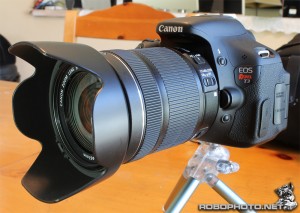The best way I can start this off is by saying, don’t hate the player, hate the game. The smart phone ruining photography debate seems to be coming up more and more. I’ve read some very passionate opinions on both sides of the fence. Phonetography, I get it. It brings photography to the masses. Instagram, one click editing. Its easy and fun, I get that too. Photography should be fun. I can see where some purists get upset though. I mean, I’m not a pro or anything, but there are some things about smartphone photography which upset me too, but more on that later.
The good:
It gets more people interested in photography. I see a few people on my social networking feeds who are making conscious efforts to take real nice phone pics. Their photos have great composition and interesting subject matter which to me carries most of the weight of a photo anyway. I’m not usually a fan of filters but they seem to use them to great effect. But the most import thing is they are having fun.
The bad:
A lot of people in my feed don’t even bother to make sure the pictures are in focus. Mundane subject matter, bad composition. Quantity over quality. Most people ditch the notion of carrying around a real camera anymore because the one on their phone is good enough. Even though that nice point and shoot they purchased 2 years ago sitting in their drawer can take a far better picture than their phone. Another negative is Facebook ruins your photos by reinterpolating them for faster viewing speeds and destroy the quality of the original picture.
I put the blame on social media more than anything else. Smart phone photography and social media go hand in hand. If there was no Facebook or Instagam, chances are your camera on your phone wouldn’t see as much use. Like wise if your phone didn’t have a camera, your Facebook wouldn’t have as many photos. A lot of people are just too lazy, or think hooking up a USB cable from a camera or a computer is too hard or time consuming. At the same time I also see it as a natural progression. Think back to 8 years ago and beyond what did the average person do with photos? How did we share them? We made photo CDs, we had photo books printed, and we printed 4”x6” photographs to hand out. Our 4”x5” phone screens are the new 4”x6” and our albums on Facebook replace our printed albums.
My hope is that people who are using their smartphones taking pictures eventually take it to that next level. I’m not talking going out and buy a whole DSLR set up or even to shoot film, well maybe a little lol. But go back and look at where photography started and respect the craft. I’m an artist. I was trained in fine art. I cant paint in oils, acrylics, airbrush. I’ve sculpted. I’ve studied commercial art. Eventually I came into the digital era. I traded my pastels for a Wacom tablet and leave my sculpting to 3D modeling programs. I understand where purists come from when they get upset about smart phone photography. Other artists guffawed at me when they saw my digital paintings. “Oh the computer is drawing it for you.” To an extent. But, I had to design and build each model. I had to design the and make the textures. I made the composition. I chose the “camera” angles. 3D design is far from a one click process. But what made my artwork stand out was my fine art background. Having that respect and and knowledge, paid off in my designs. The same goes for photography, what I learned in film transpired to digital.
But then I say to my self whats really at stake here? I look at my wife. I bought her a DSLR and she just doesn’t have time to devote to it. I tell you what though. She takes great pics with her smartphone. Then I realize all this smart phone stuff takes place inside this social networking bubble. And in the end It really doesn’t effect the type of photography I like to do.









